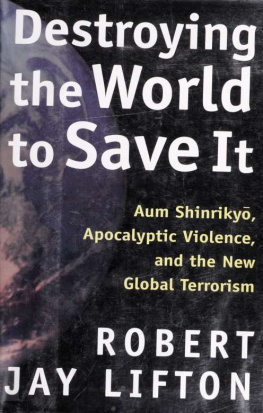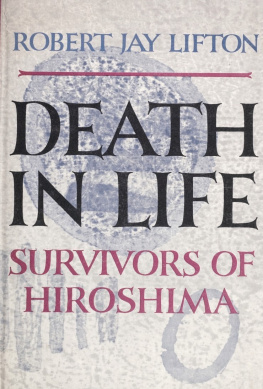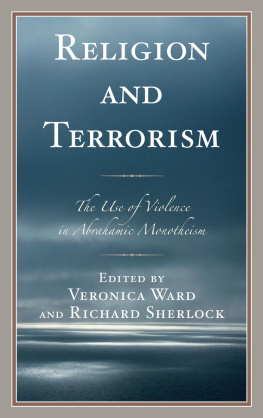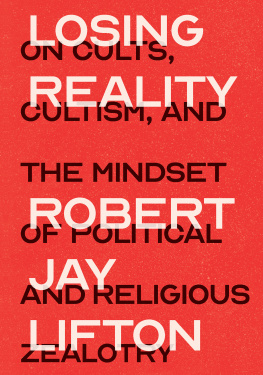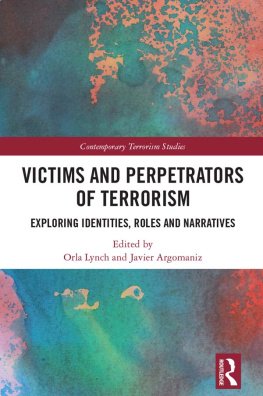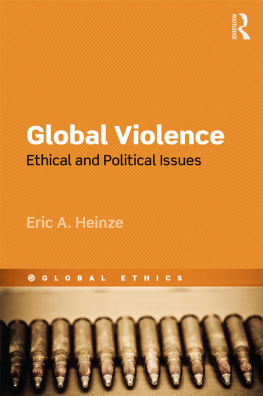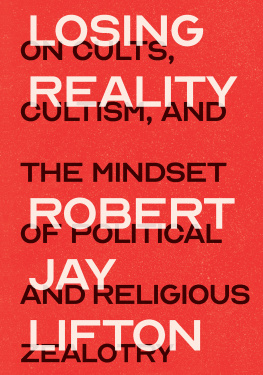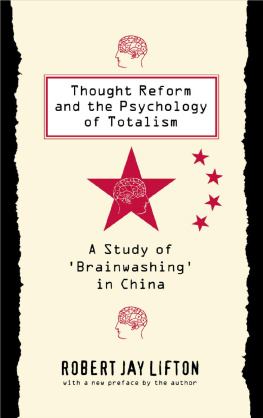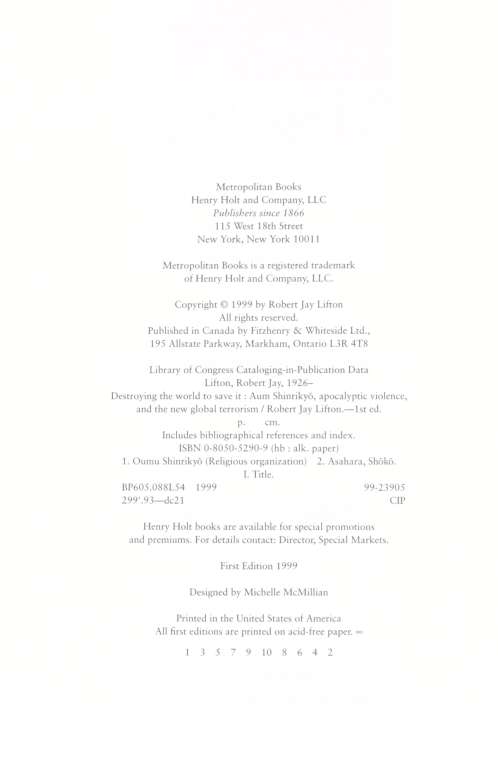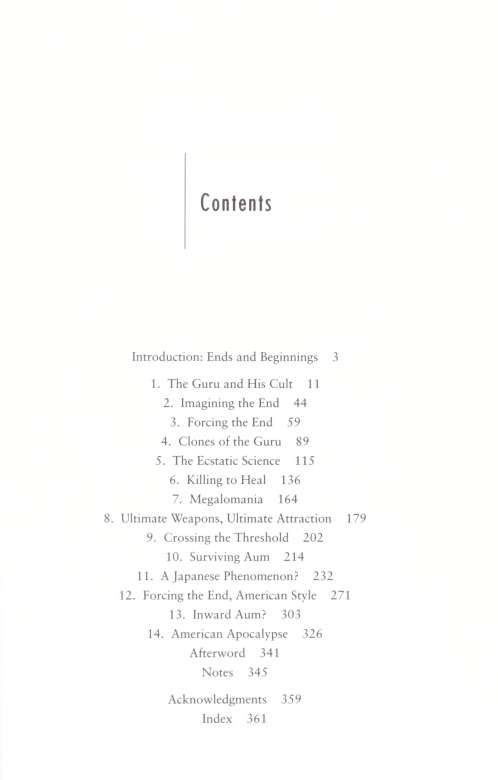This book made available by the Internet Archive.
FOR NATASHA




DESTROYING THE WORLD TO SAVE IT
Introduction: Ends and Beginnings
I t is not true that there is nothing new under the sun. To be sure, the oldest human emotions continue to haunt us. But they do so in new settings with new technology, and that changes everything.
On March 20, 1995, Aum Shinrikyo, a fanatical Japanese religious cult, released sarin, a deadly nerve gas, on five subway trains during Tokyos early-morning rush hour. A male cult member boarded each of the trains carrying two or three small plastic bags covered with newspaper and, at an agreed-upon time, removed the newspaper and punctured the bags with a sharpened umbrella tip. On the trains, in the stations where they stopped, and at the station exits, people coughed, choked, experienced convulsions, and collapsed. Eleven were killed and up to five thousand injured. Had Aum succeeded in producing a purer form of the gas, the deaths could have been in the thousands or hundreds of thousands. For sarin, produced originally by the Nazis, is among the most lethal of chemical weapons. Those releasing it on the trains understood themselves to be acting on behalf of their guru and his vast plan for human salvation.
4 I Destroying the World to Save It
Aum and its leader, Shoko Asahara, were possessed by visions of the end of the world that are probably as old as death itself. Asahara also held in common with many present-day Christian prophets of biblical world-ending events a belief that Armageddon would be connected to those most secular of end-time agents, nuclear warheads or chemical and biological weapons of mass destruction.
But his cult went a step further. It undertook serious efforts to acquire and produce these weapons as part of a self-assigned project of making Armageddon happen. For the first time in history, end-time religious fanaticism allied itself with weapons capable of destroying the world and a group embarked on the mad project of doing just that. Fortunately, much went wrong. After all, it is not so easy to destroy the world. But we have a lot to learn from the attempt.
The impulses that drove Asahara and Aum are by no means unique to him and his group. Rather, Aum was part of a loosely connected, still-developing global subculture of apocalyptic violenceof violence conceived in sweeping terms as a purification and renewal of humankind through the total or near-total destruction of the planet. One can observe these inclinations in varied groups on every continent. Their specific transformative projects may be conceived as religious or political, the violence to be employed either externally directed or suicidal or both at once. One can find certain psychological parallels to Aum Shinrikyo in, for instance, the Jewish fundamentalists who encouraged the assassination of Israeli Prime Minister Yitzhak Rabin, in Palestinian Hamas suicide bombers, and in Hindu and Muslim fundamentalists who act violently on behalf of claims to ancient sacred places on the Indian subcontinent. But my exploration of Aum led me particularly to the apocalyptic inclinations of American groups like the Charles Manson Family, Heavens Gate, and Peoples Temple, as well as the Oklahoma City bombers, Aryan supremacists, and paramilitary survivalists on the radical right. Just as we now take for granted the interconnectedness of the global economic system, so must we learn to do the same for the growing global system of apocalyptic violence. Outbreaks anywhere reverberate everywhere.
Increasingly widespread among ordinary people is the feeling of things going so wrong that only extreme measures can restore virtue and righteousness to society. When the world comes to be experienced
Introduction: Ends and Beginnings I 5
as both hateful and dead or dying, a visionary guru can seize on such feelings while promising to replace them with equally absolute love and life-power. Nor are any of us completely free of those inner struggles. The sentiments that created Aum Shinrikyo are part of the spiritual and psychological ambience each of us inhabits day by day.
Apocalyptic violence has been building worldwide over the last half of the twentieth century. Having studied some of the most destructive events of this era, I found much of what Aum did familiar, echoing the totalistic belief systems and end-of-the-world aspirations I had encountered in other versions of the fundamentalist self. I came to see these, in turn, as uneasy reactions to the openness and potential confusions of the protean self that history has bequeathed us. I had been concerned with these matters since the mid-1950s, when I first studied thought reform (or brainwashing) in Communist China and then among American cultic religious groups. I came to recognize the power of a totalized environment for mobilizing individual passions in the creation of fierce, often deeply satisfying expressions of collective energy.
Aums obsession with nuclear weapons and with the atomic destruction of Hiroshima in particular connected with interview work I had done in that city in the early 1960s on the psychological effects of the atomic bomb and on the psychology of the survivor. In subsequent work I had explored the dangers of nuclearism, the embrace and even deification of nuclear weaponry so that potential agents of mass destruction become a source of security, life-power, and even at times salvation. My work in the early 1970s with Vietnam veterans who told of destroying a villageindeed, much of a countryin order to save it had reverberations in Aum, where the ambition was considerably greater: destroying a world in order to save it. There were striking parallels in Aum to behavior I encountered in the 1970s and 1980s while studying the Nazis utilization not only of professional killers but also of killing professionalsin this case, doctors. In Aum, too, doctors were central to the cults reversal of healing and killing. They participated in individual murders and had an important role, together with other scientists, in producing and releasing deadly chemical and biological weapons.
Aum is now viewed throughout the world as the primary example

